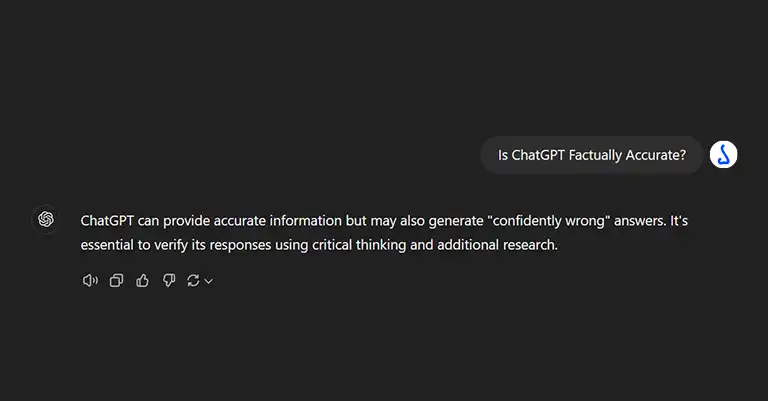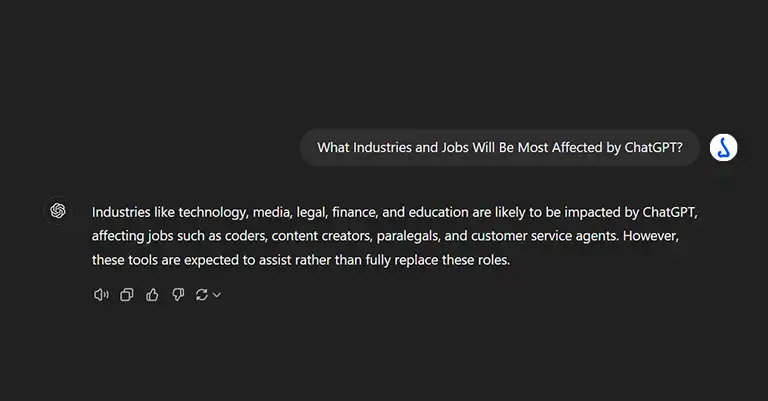What are ChatGPT and Generative AI (and Why Should We Use Them)?
Imagine a world where machines can not only understand your words but also create art, write stories, and even predict your needs. It sounds like science fiction, right? But what if I told you this future is already here, and AI powers it?
Artificial Intelligence (AI) has rapidly evolved over the past few years, becoming an integral part of our daily lives. From virtual assistants like Siri and Alexa to advanced systems that can diagnose diseases, AI is transforming the way we live and work. One of the most exciting developments in AI is the rise of Generative AI, which can create new content, and ChatGPT, a powerful language model that can engage in human-like conversations.
In this blog, we will explore what Generative AI and ChatGPT are, how they work, and why they are important. We will delve into their applications, benefits, and the potential challenges they pose. By the end of this blog, you’ll have a clear understanding of these cutting-edge technologies and why they are worth paying attention to.
What is Generative AI?

Generative AI is a type of artificial intelligence that can create new content, such as text, images, audio, and video, by learning from existing data. Unlike traditional AI, which might classify or predict based on input data, Generative AI generates new data that resembles the training data
Examples Some popular Generative AI models include:
- DALL-E: Creates images from textual descriptions.
- Midjourney: Generates artistic images based on user prompts.
- ChatGPT: Engages in human-like conversations and generates text based on input prompts.
What Data is Generative AI Trained On?
Generative AI models are trained on diverse types of data, including text, images, audio, and video. For example, text-based models like ChatGPT are trained on vast amounts of written content from books, articles, and websites. Image-based models like DALL-E use large datasets of images and their descriptions.
High-quality datasets are crucial for effective AI models because they ensure the AI learns accurate and relevant patterns. Diverse and comprehensive datasets help the AI generate more realistic and useful outputs. Poor-quality data can lead to biased or inaccurate results, which is why the quality and diversity of training data are paramount
What is ChatGPT?
ChatGPT is a powerful language model developed by OpenAI, an organization focused on creating and promoting friendly AI. The technology behind ChatGPT, called GPT (Generative Pre-trained Transformer), has evolved through several iterations, with each version becoming more sophisticated in understanding and generating human-like text. GPT-3, launched in 2020, marked a significant leap, and GPT-4 has further improved the model’s capabilities.
ChatGPT operates by analyzing patterns in vast amounts of text data to predict and generate coherent and contextually relevant responses. It uses a transformer architecture that processes inputs in parallel and leverages attention mechanisms to focus on relevant parts of the input. This allows it to understand context, respond to queries, and generate detailed and nuanced content.
Key Capabilities:
- Conversational Abilities: ChatGPT can engage in back-and-forth dialogues, answer questions, and provide explanations on a wide range of topics.
- Content Generation: It can write essays, stories, and articles, making it a useful tool for content creators.
- Problem-Solving: It can assist with coding, provide solutions to mathematical problems, and explain complex concepts.
- Personalization: Users can adjust its tone, and style, and even instruct it to adopt a particular persona, making interactions more personalized.
What Data is ChatGPT Trained On?
Types of Data: ChatGPT is trained on a diverse range of text data, including internet sources, books, articles, and other publicly available content. This extensive dataset enables it to understand and generate text on a wide array of topics and styles.
Data Contribution to Performance: The large and varied datasets allow ChatGPT to generate high-quality, context-aware responses. This broad training helps it generalize well across different domains, making it versatile and capable of answering questions on a wide range of subjects. However, since it relies on historical data, it may not always reflect the most current events or information.
Could ChatGPT Replace Wikipedia or Google?
Wikipedia provides curated, regularly updated, and fact-checked information. ChatGPT generates responses from pre-existing data, which can lead to outdated or incorrect information. However, there is debate amongst Wikipedia authors about whether or not ChatGPT should be able to write Wikipedia articles.
Google retrieves precise information through verified sources. ChatGPT offers conversational responses but lacks real-time data verification and may produce inaccurate content. Google has certainly been spooked by the rise of ChatGPT, and it is working on its rival system called Bard.
Limitations: It cannot verify facts or access real-time information, making it less reliable for factual queries.
Is ChatGPT Factually Accurate?

ChatGPT can generate accurate responses, but it may also produce incorrect or outdated information. For example, it might confidently state facts about current events or technology trends that have changed since its last training update. Always fact-check its responses using reliable sources, as it doesn’t have real-time access to the internet or the ability to verify recent developments.
Is ChatGPT a Step Toward General Intelligence?
ChatGPT isn’t considered human-level or “general” AI, as it doesn’t possess the broad cognitive abilities associated with strong AI. However, it also goes beyond traditional “narrow AI” by demonstrating more flexible language understanding and generation. Some experts describe it as “transitional AI,” existing in a space between narrow and general AI, indicating a significant advancement in AI development. Its ability to handle complex language tasks suggests progress toward more sophisticated AI systems, though true general intelligence remains a distant goal.
What Industries and Jobs Will Be Most Affected by ChatGPT?

A survey by Business Insider highlights that ChatGPT and similar generative AI tools are likely to impact a range of jobs, including:
- Technology: Coders, software engineers, and data analysts.
- Media: Roles in advertising, content creation, technical writing, and journalism.
- Legal: Paralegals and legal assistants.
- Market Research: Analysts and researchers.
- Education: Teachers and instructional designers.
- Finance: Financial analysts, advisors, and investment traders.
- Design: Graphic designers.
- Accounting: Accountants and auditors.
- Customer Service: Support agents.
While these roles may be transformed, AI is expected to assist rather than replace them, enhancing efficiency and creativity in various fields.
How Can I Learn More About ChatGPT?
You can explore ChatGPT for free to get hands-on experience with its capabilities. For a structured learning approach, there are many free online resources and courses available that provide a comprehensive overview of ChatGPT and generative AI. If you’re a programmer, you can find tutorials and videos that explain how to integrate ChatGPT into your projects. Keep an eye out for more in-depth guides and articles on this topic for further learning.
Future of ChatGPT & Generative AI
Experts predict that generative AI, including models like ChatGPT, will continue to advance, enhancing accuracy, efficiency, and contextual understanding. These improvements will enable AI to tackle more complex tasks across various industries, from content generation and customer service to data analysis and decision-making. As generative AI becomes more sophisticated, its integration into diverse sectors will expand, driving innovation and operational efficiency.
The economic impact of generative AI is expected to be substantial, potentially contributing trillions of dollars to the global economy. This technology will not only boost productivity and create new market opportunities but also reshape job markets by transforming existing roles and creating new ones. Workers will need to adapt by acquiring new skills and embracing continuous learning to thrive in an AI-driven economy.
Conclusion
We discussed the basics of AI and machine learning, examined the benefits and challenges of generative AI, and considered its future impact on the economy. The growing importance of generative AI in our daily lives is clear. Embracing these technologies can enhance creativity, efficiency, and accessibility, making them valuable for individuals and organizations.